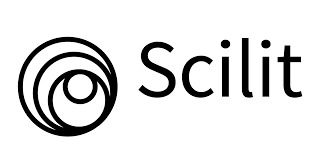Enhancing English-Speaking Skills for Food and Beverage Services for Tourism Students Through A Collaborative Learning
Abstract
The collaborative learning approach has been widely used to improve the quality of learning in a variety of courses. This present study used the collaborative approach in English learning for the specific purpose of restaurant services. The research used a mixed-method. The research data were obtained from the result of pre-and post-performance tests, participant observation notes, and unstructured interview notes. There were 35 students involved as the sample and informants. The quantitative data obtained were calculated by using a t-test and the qualitative data obtained were analyzed using content analysis. The significance value (2-tailed) of the implementation of the pre-test and post-test was 0.000 (p < 0.05). Thus, the results of the pre-and post-test experienced a significant change. The students showed positive feedback toward the collaborative approach applied. Based on the findings, collaborative learning could enhance both students’ English-speaking skills and job-related skills.
References
Agustini, L. I. and Sastrawijaya, Y. (2016) ‘Pembelajaran Kolaboratif’, Jurnal Evaluasi Pendidikan, 7(Oktober), pp. 86–94. doi: doi.org/10.21009/JEP.072.02.
Appavoo, P. et al. (2019) ‘Why Does Collaborative Learning Not Always Work Even When The Appropriate Tools Are Available?’, Turkish Online Journal of Distance Education, 20(4), pp. 0–2. doi: 10.17718/TOJDE.640500.
Ayon, N. S. (2013) ‘Collaborative Learning in English for Specific Purposes Courses : Effectiveness and Students ’ Attitudes towards It’, 5(3), pp. 62–76.
Blue, G. M. and M. H. (2003) ‘Hospitality Language as a Professional Skill’, English for Specific Purpose, 22(1). doi: https://doi.org/10.1016/S0889-4906(01)00031-X.
Candiasa, I. M. (2011) Pengujian Instrumen Penelitian Disertai Aplikasi ITEMAN dan BIGSTEPS. Singaraja: Undhiksa Press.
Dahmer, S. J. and K. W. K. (2009) Restaurant Service Basics. Second. Hoboken: John Wiley & Sons, Inc.
Huang, X. (2018) ‘Improving Communicative Competence through Synchronous Communication in Computer-Supported Collaborative Learning Environments: A systematic Review’, Education Sciences, 8(1). doi: 10.3390/educsci8010015.
Kristiana, V. and Ningsih, A. M. (2017) ‘Implementasi Strategi Kolaboratif dalam Pengajaran Kosakata Bahasa Inggris Perbankan bagi Mahasiswa Sastra Inggris UMN-AW Medan’, Jurnal Pendidikan Bahasa dan Sastra, 2(1), pp. 125–129.
Laal, Marjan et al. (2013) ‘What Do We Achieve from Learning in Collaboration?’, Procedia - Social and Behavioral Sciences, 93(2012), pp. 1427–1432. DOI: 10.1016/j.sbspro.2013.10.057.
Likitrattanaporn, W. (2017) ‘The Development of English Language Teaching Skills for Graduate Students through the Process of Learning by Doing’, English Language Teaching, 10(7), p. 96. doi: 10.5539/elt.v10n7p96.
Menggo, S., Suparwa, I. N. and Astawa, I. G. (2019) ‘Hindering Factors in The Achievement of English Communicative Competence in Tourism Academy Students’, Aksara, 31(1), pp. 137–152. doi: 10.29255/aksara.v31i1.235.137-.
Novitasari, N. F. (2019) ‘Collaborative Learning in ESP Speaking Classroom: Learners Perceptions and Experiences’, in Conference Paper. ISoLEC, pp. 309–319. doi: 10.18502/kss.v3i10.3912.
Panitz, T. (1997) ‘Collaborative versus Cooperative Learning: A Comparison of the Two Concepts Which Will Help Us Understand the Underlying Nature of Interactive Learning.’, Cooperative Learning and College Teaching, 8(2), p. 13. Available at: http://pirun.ku.ac.th/~btun/pdf/coop_collab.pdf.
Pattanpichet, F. (2011) ‘The Effects of Using Collaborative Learning to Enhance Students’ English Speaking Achievement’, Journal of College Teaching & Learning, 8(11), pp. 1–10.
Prickett, C. (2020) ‘Belgrade E Nglish L Anguage & LIterature S Studies, Journal of Behavioral and Social Sciences, 1(2), pp. 1–256.
Rao, P. S. (2019) ‘Collaborative learning in English language classrooms’, Research Journal of English Language and Literature (RJELAL), 9(2), p. 5. DOI: 10.5958/2249-7137.2019.00020.x.
Storch, N. (2005) ‘Collaborative writing: Product, process, and students’ reflections’, Journal of Second Language Writing, 14(3), pp. 153–173. DOI: 10.1016/j.jslw.2005.05.002.
Sugiyono (2014) Metode Penelitian Pendidikan: Pendekatan Kuantitatif, Kualitatif, dan R&D. Bandung: Penerbit Alfabeta Bandung.
Widanta, I. M. R. J. (2017) Model Pembelajaran Bahasa Inggris Berpendekatan Pragmatik di Perguruan Tinggi Vokasi. Udayana University.
Zahedpisheh, N., Z. B. A. B. & N. S. (2017) ‘English for Tourism and Hospitality Purposes (ETP)’, English Language Teaching, 10(9), p. 86. DOI: 10.5539/elt.v10n9p86.
Copyright (c) 2022 I Gede Astawa; I Ketut Ardiasa

This work is licensed under a Creative Commons Attribution-NonCommercial 4.0 International License.
The author whose manuscript is published agrees to the following conditions:
- Publication rights of all journal manuscripts published / published on the JKTP website are held by the editorial board with the author's knowledge (copyright remains the author's).
- The formal legal provisions for access to digital electronic journal articles are subject to the provisions of the CC Attribution-Non-Commercial 4.0 license, which means JKTP has the right to store, transfer media / formats, manage in the form of a database, maintain, and publish articles without asking permission from the author as long as the author's name remains as the copyright owner.
- Manuscripts published / published in print and electronically are open access for the purpose of education, research and libraries. Apart from these purposes, the editorial board is not responsible for violations of copyright law.




.png)










